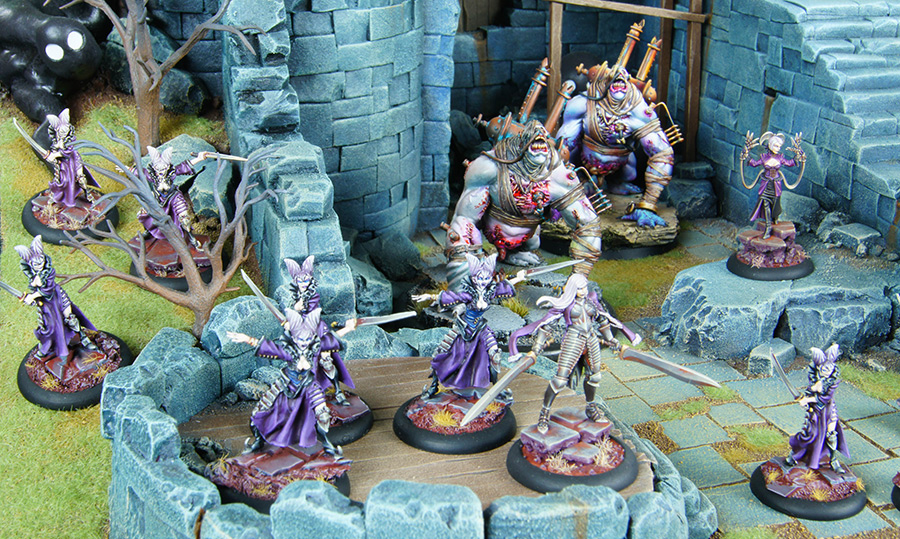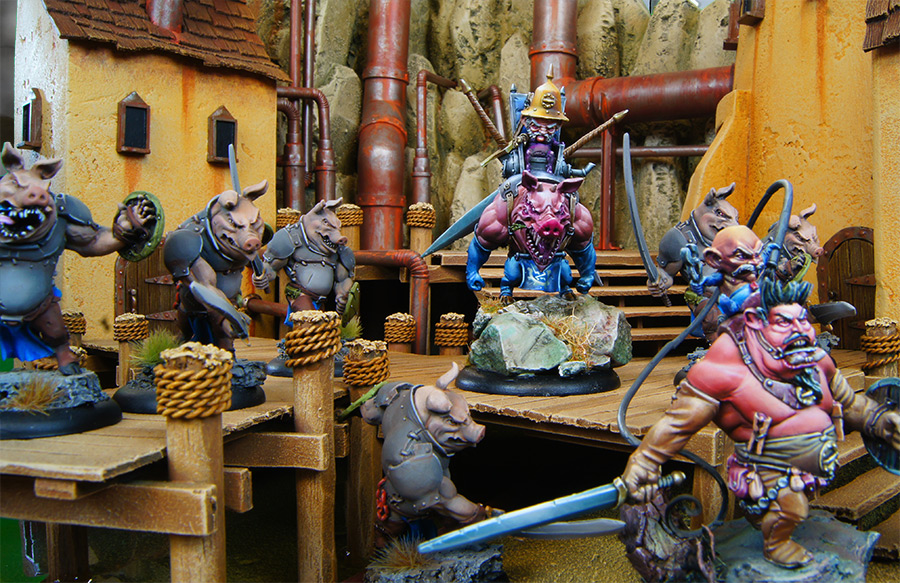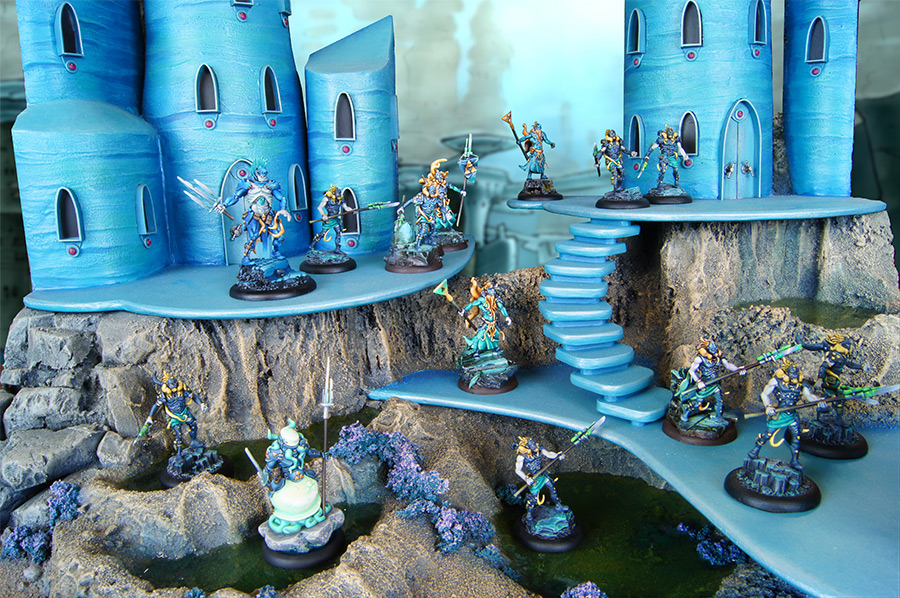Wrath of Kings: A Review of the Basics
Over the last week I've managed to get a couple games of Wrath of Kings in with Obi. Both of us really enjoyed the core game mechanics, so in the future you can probably expect to see some battle reports, for right now though, I thought I'd talk a bit about the basics of the game and what I liked about it.

Alternating Activation
The first big thing that's different about this game than many others is the structure of a turn. Instead of one player moving all their models, then shooting with all their models, and so on, each player takes turns activating one of their models (or more if they're near a leader, see below). When a model activates, it may perform a maneuver (i.e. move), as well as one other action (hit in melee, shoot a ranged weapon, cast a spell, etc.). After you activate your model(s), your opponent then gets to take an activation. If you're out of models, you pass and your opponent gets one more chance to activate models, then the round is over.
Simplified Attacking
If there's one way to describe dice rolling in a game like 40k, it's "abundant." Wrath of Kings is probably the total opposite, it has the least amount of dice rolling of any game I've played. When you perform an attack, you simply roll a number of dice equal to your attack rate and compare them to the defenders chart. Many attacks will modify the defenders chart in some way, but other than that, you just tally up how many hits you score on their chart and apply the damage. That's right, one dice roll and you're done.
While it may seem very simplified, there are a lot of factors that can play into a models resilience that are not themselves dice rolls. Each model has a Resilience rating, which is the number of successful hits required to cause a wound, plus obviously their wounds rating, and finally their defense charts can vary greatly, some models are effectively hit on a 6+ (on a d10) while some other models may need an 8+ or even 9+ to cause a successful hit. They've managed to compress what would be a handful of dice rolls in 40k (hit, wound, save, FNP), into a much more fluid mechanic.
Army Composition
Right off the bat, the way you construct an army is incredibly straight forward, at each game size, you're allotted a certain number of infantry, specialists and leaders. For example, in a Battle sized game (the largest game size), you're given 5 Leaders, 24 Infantry and 4 specialists, plus 4 options of either 3 more infantry or 1 more specialist. More powerful models are considered Rank 2, and take up 2 of your choices instead of one, so in the Battle example, you could have 24 rank 1 infantry, or 12 rank 2, or anything between.
Leaders
Your leaders are incredibly important, models that are within 6" of a leader (or 8" of your commander) can activate in groups, instead of one at a time, provided they're all the same type. That means if you start losing commanders, you'll be activating far fewer models than your opponent, so it's very important to keep them alive. Additionally, if your leader is the same type as the infantry that they're activating, they'll give them a little bonus.
Infantry
Your basic grunts are your infantry, most of the models in your army will be these guys. They've managed to do a great job making each one unique and interesting with fun abilities, but none of their abilities feel out of place... You wont have a random crocodile that makes models near by it shoot better fireballs.
Specialists
These are the fun guys, ranging from elite warriors, to sorcerers and dragons. Very few of them can be used in a combined activation from a leader, so each time you use one, it will be your entire activation. While they are very effective units, none of them feel game breaking, but they're all quite fun to use and work with different strategies.
Factions
The game launched with 5 factions, each one having a very distinct flavor. The Goritsi are fast and hard hitting, Hadross are slower and very resilient, Shael-han have a lot of auras to make their troops specialized, while Teknes has a very well rounded force, and the Nasier are more like aggressive brutes. Personally I prefer the Teknes and Nasier, but all of them have their charm and feel very different than each other.
Game Scalability
One thing I didn't expect from this game is how well they designed the game in terms of scalability. Each of the objectives scales with the number of ranks of leaders each player has, which bluntly means, in a Battle sized game, you will have the opportunity to remove 10 morale from your opponent (effectively 2 points of morale for every 1 point of leaders). In a smaller game, where you have less leaders, you wont be able to achieve this many points of morale loss. The amount of morale you have in your army is equal to the number of models in your army divided by 3 (rounding down), plus 1 for every leader model you have. A Player loses the game at the end of a turn where they have 0 Morale.
Due to the way objectives and activation work, the game readily supports more than 2 players, each person simply activates in a rotation. None of the mechanics end up being wonky with 3 players, it just works right out of the box.

There's a lot to this game, the actual rules are incredibly simple and straight forward, coming in at less than 20 pages, but with less dice rolling, the game becomes more about strategy than luck, which I can appreciate. I'm very excited to play some more.




